5.2 Changes in Factor Demand and Factor Supply
5 min read•june 18, 2024
J
Jeanne Stansak
dylan_black_2025
AP Microeconomics 🤑
95 resourcesSee Units
Factor Supply and Demand
In a factor market, the roles of supplier and demander are flipped. Instead of consumers demanding products supplied by producers, producers demand labor supplied by consumers. However, the laws of supply and demand still apply to factor markets. Let's break down each part of the market:
Factor Supply
Factor supply, also written in AP Micro as labor supply (since unit 5 focuses on factors broadly but specifies mostly on labor, not capital), is the non-firm side of a factor market. Labor supply represents the lowest willingness and ability to sell one's labor to a firm. Factor supply follows the traditional law of supply: as quantity increases, wage increases. This is because with a higher wage, people are willing to supply more labor. This is fairly intuitive. If you were paid $50/hour to study for AP Micro, you'd probably study a bit more for AP Micro. But you love AP Micro, so you're studying with us for free! You do love AP Micro...right?
Economists Being Economists Moment: You may notice that Labor is notated as "N" in the graphs below. This is because economists use the letter "N" to mean labor. You can also use L in AP Micro! So LD and LS are acceptable.
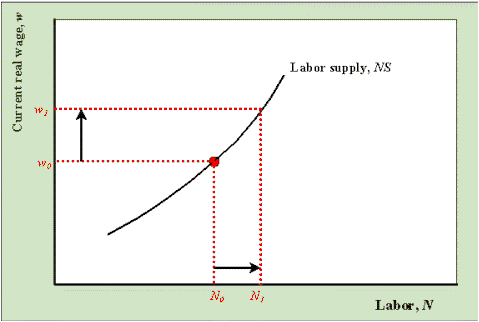
Factor Demand
Factor demand works almost exactly analogously to how product demand worked in unit 2 of AP Micro. At a high wage, firms are not willing to buy much labor, and at a low wage, firms are willing to buy more labor. This leads to a downward sloping demand curve for labor.
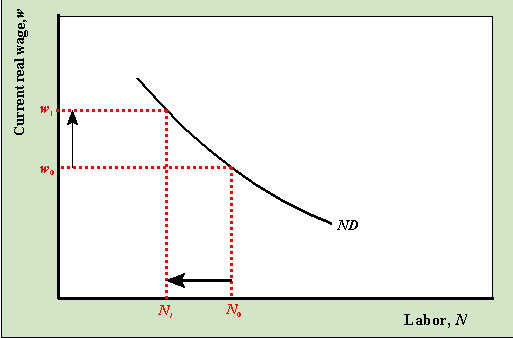
Factor Market Equilibrium
Like a normal market, the market labor and wage rate are set at the point where the quantity of labor supplied equals the quantity of labor demanded. At this point, all workers who are willing and able to sell their labor do so to firms that are willing and able to hire them. There is no shortage of workers or surplus of labor.
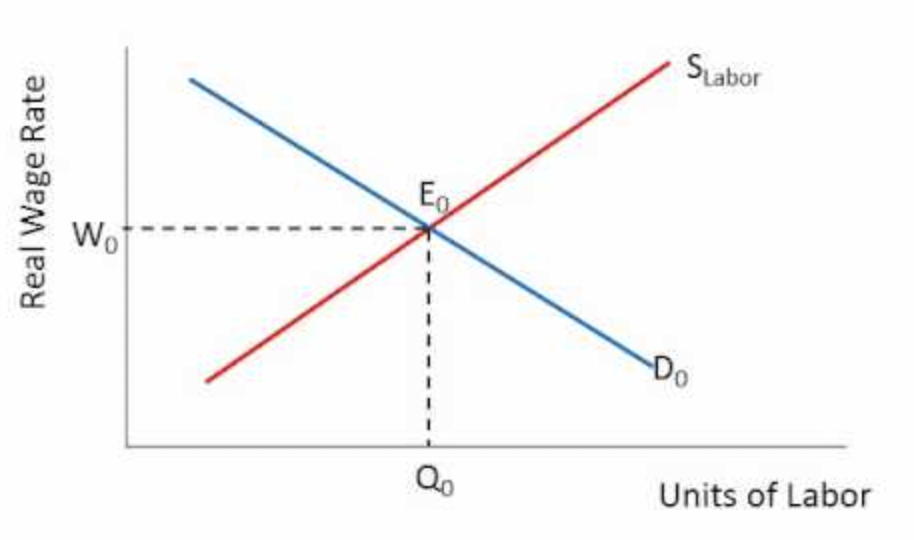
Shortages and Surpluses of Labor
If the price in a labor market is above or below the equilibrium price, the market will experience either a shortage or surplus of labor. This is basically the same as unit 2's surpluses and shortages.
Below is a surplus of labor caused by an artificially high wage. This could be something like a wage floor, such as minimum wage imposed by the government. At this wage, more workers want to sell their labor than there are firms willing to hire. Thus, only Qd (labelled ND below) get hired, and the excess supply of labor goes unemployed, even though they're willing to sell their labor.
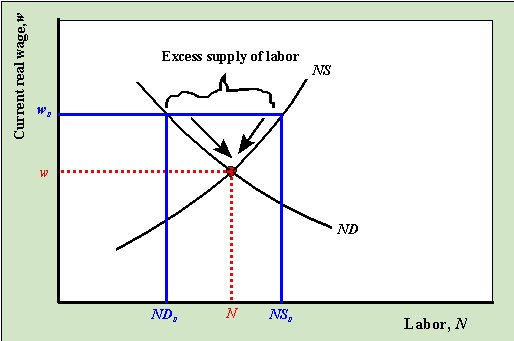
The next graph is a shortage of labor caused by an artificially low wage. There aren't too many concrete examples of this in the real world, but a maximum wage imposed by the government would be an example. In the below graph, we have a low wage of $2.50. This means firms demand 875 workers but only 125 workers are willing to sell their labor at that low wage.
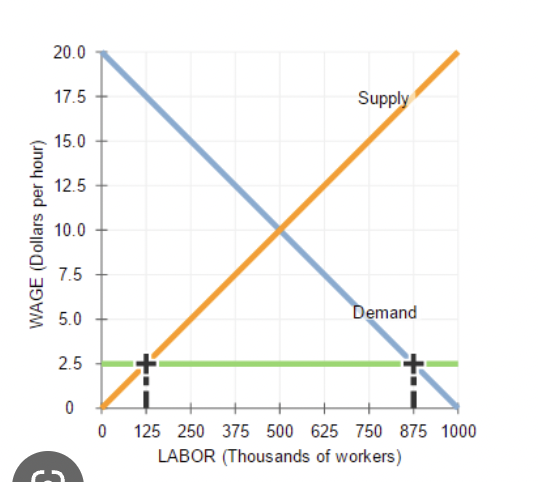
Determinants of Factor Demand
There are three components of resource demand that will change the demand for the resources. We could refer to these as the determinants of resource demand.
Prices of Related Input
The first determinant is the price of related inputs. In this determinant, we are referring to substitute resources and complementary resources that are used in the production of goods and services. If the price of one resource becomes more expensive, the firm will increase their demand for the substitute resource. For example, if the price of copper piping increases, home builders will more willing to demand plastic piping. In looking at complementary resources, we can look at the production of soft drinks. Both aluminum and sugar are used in the production of soft drinks. If the price of aluminum increases, then we would see the demand for sugar decrease since both products are used to produce soft drinks.
Changes in Productivity
The second determinant of resource demand is a change in productivity. Let's take a situation where a new technique is developed that cuts production time in half. Since labor productivity has increased, each worker can make a greater quantity of the goods than they used to. This leads to each worker generating a greater marginal revenue product which increases their value to the firm or business. As a result, this increases the demand for labor.
Product Demand
The third determinant of resource demand is a change in the demand for the good or service. For example, if there is an increase in the demand for pizza, then there will be greater demand for all the resources that are involved in the production of pizza, including cheese, sauce, dough, and workers. Resource demand can also change when the price of a product changes. For example, if the price of pizza decreases, then the worker who is trained to make a pizza generates a smaller MRP (because MRP = MP x price), so the demand for these workers will decrease.
Let's look at some scenarios on graphs:
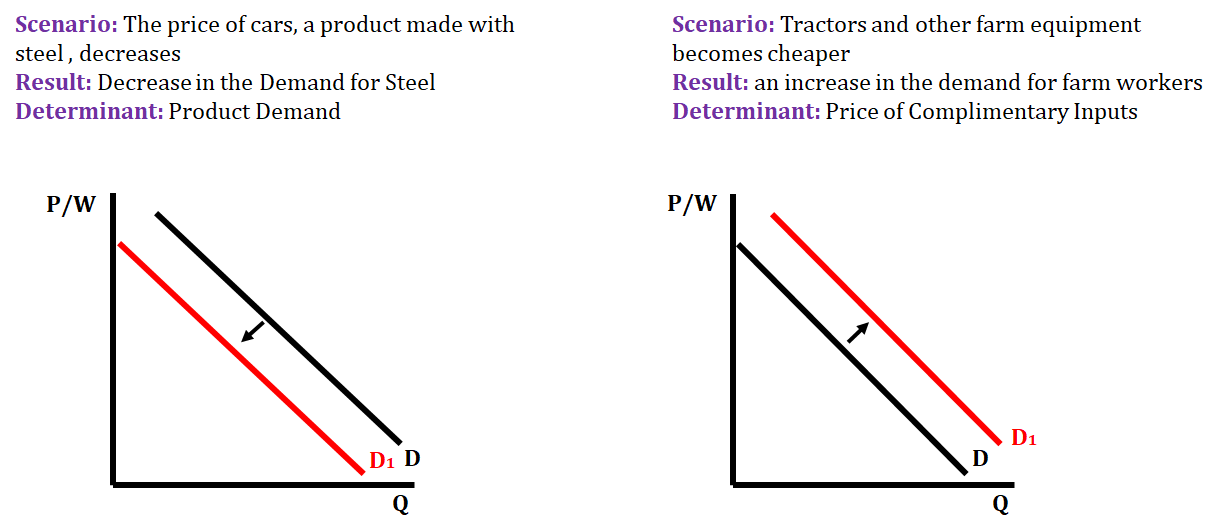
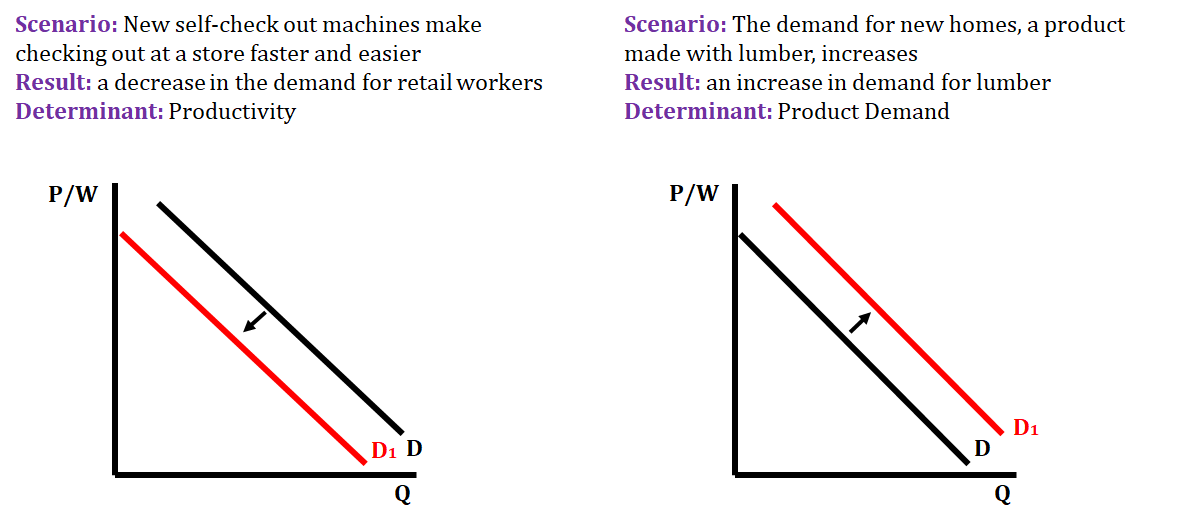
Determinants of Factor Supply
Just like with the demand for resources, there are several things that can change the supply of resources. When we are looking at the supply of resources, we generally focus on workers.
Number of Qualified Workers
The first determinant of the supply of workers is the number of qualified workers that are available in a particular industry. This can be influenced by immigration, education, training, and abilities. Here are some examples of this determinant:
- If a country enacts stricter immigration laws than that will shift the labor supply to the left because of the smaller pool of workers.
- The number of graduates with engineering degrees soar. This would cause the labor supply to shift right.
Government Regulations
The second determinant of the supply of workers is government regulations and licensing. Here are some examples of this determinant:
- If the government establishes a certification process that makes it harder to be an electrician than we would see the supply of electricians decrease shifting the labor supply curve to the left.
Personal Values
The third determinant is personal values regarding leisure time and societal roles. Here are some examples of this determinant.
- The increase in the labor force, especially women, during WWII because people saw it as a patriotic duty to help produce the goods that would help in the war efforts. This would increase the labor supply and shift the curve right.
- Low-skill workers decide that working at minimum wage isn't worth their time. This would shift the labor supply curve to the left due to the decrease in the amount of workers.
- The wealth effect states that if long-term wealth increases, fewer people will supply labor at all wages, meaning supply shifts left, and vice-versa.
Let's look at some scenarios on graphs:
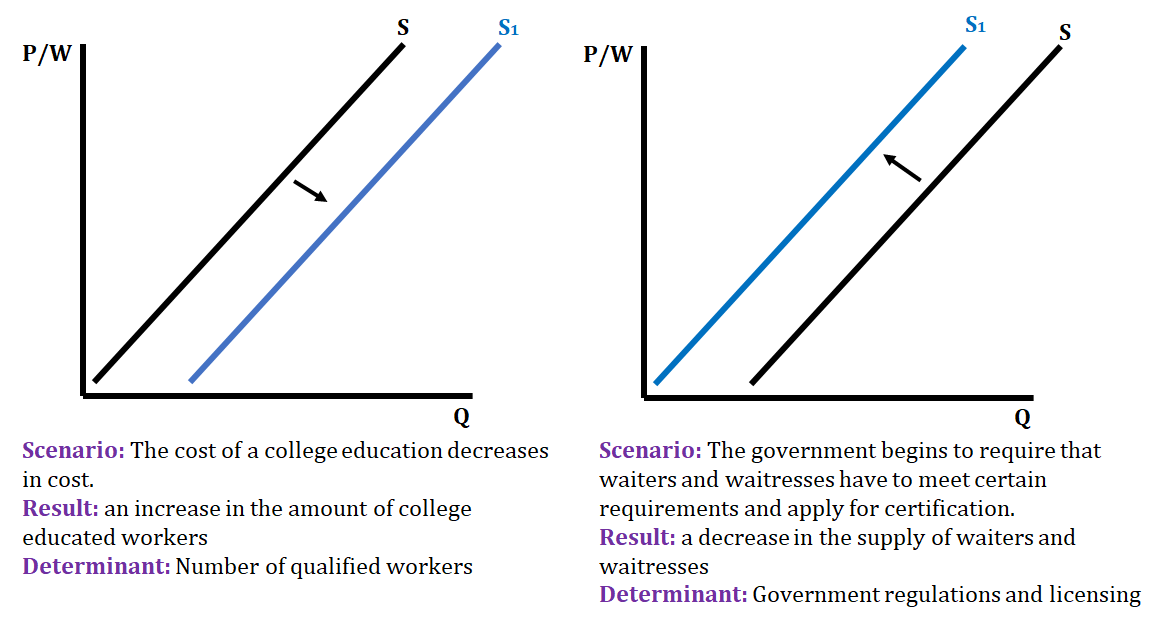
Changes in the Labor Market Equilibrium
Remember there are determinants that change both labor demand and labor supply. When these determinants occur, there is a change in the equilibrium of the labor market.

Let's look at an example that changes labor demand and an example that changes labor supply.
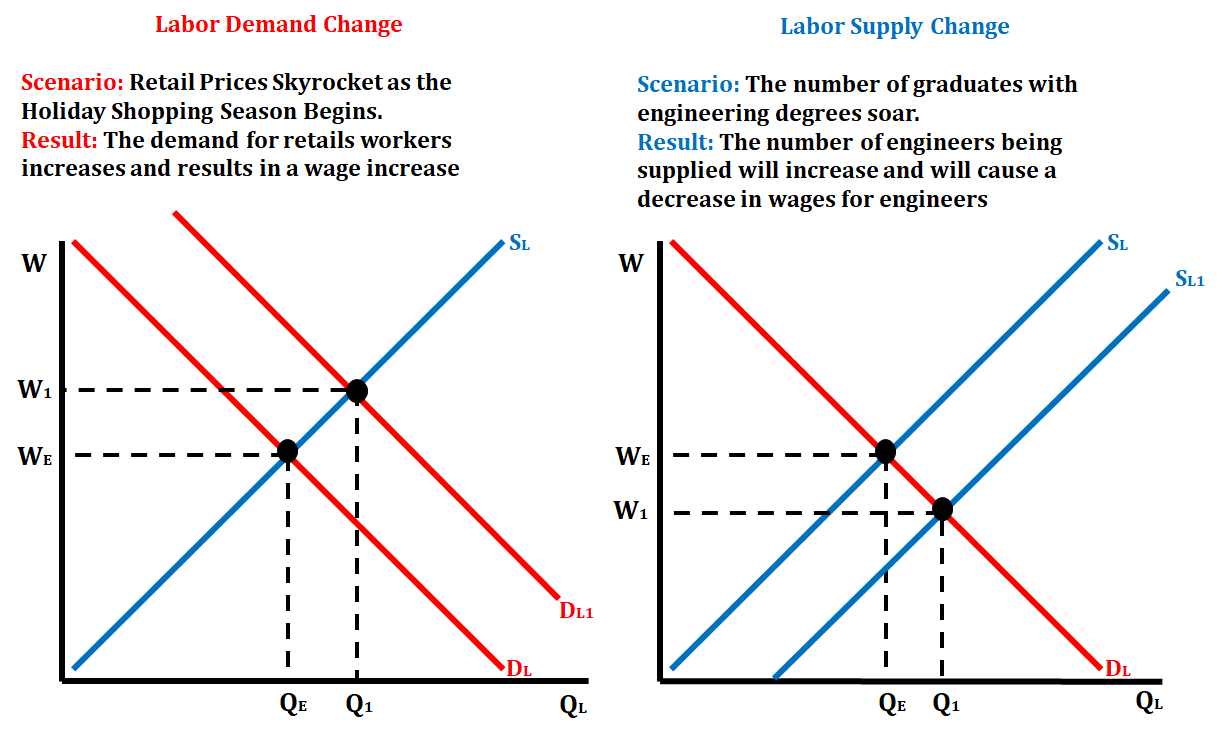
Browse Study Guides By Unit
💸Unit 1 – Basic Economic Concepts
📈Unit 2 – Supply & Demand
🏋🏼♀️Unit 3 – Production, Cost, & the Perfect Competition Model
⛹🏼♀️Unit 4 – Imperfect Competition
💰Unit 5 – Factor Markets
🏛Unit 6 – Market Failure & the Role of Government
🤔Exam Skills
📚Study Tools

Fiveable
Resources
© 2025 Fiveable Inc. All rights reserved.